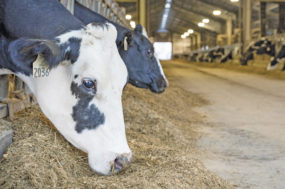Volatile fuel costs are steadily becoming the new norm for consumers in the U.S. and much of the world. Earlier this year, the U.S. Energy Information Administration (EIA) projected the price of imported crude oil to peak at $115 per barrel this summer, but due to stagnant global economic growth backed by rising financial uncertainty in Europe, oil prices fell well below $100 in June. Predicting the cost of oil is contingent on many factors, yet it’s hard to deny the dramatic trend of rising fuel costs – today’s oil prices are more than four times what they were a decade ago.
The situation is not likely to change in the years to come as demand for oil from growing economies like China, Brazil, India and the Middle East remains high. Furthermore, disruptions in supply could cause oil prices to spike, fueled by geopolitics or extreme weather conditions.
So what does this mean to a dairy farmer?
One could assume that the result of higher fuel costs – making planting, harvesting and transporting more expensive – is lower farm profitability.
If an average dairy producer’s margins continue to get smaller, the risk of going belly-up becomes greater.
Some dairy producers – especially those trying to retain the tradition of farming in their family – are frustrated about being squeezed out of a business by global politics and even their own nation’s agricultural policies.
With only one-third of the nation’s feed supply for dairy cows coming from the farm itself, many producers are forced to supplement their own stock. Given the rising price of oil and the high demand of corn for fuel, feed costs have reached all-time highs.
According to a recent study by the University of Missouri, 65 percent of milk production costs are attributed to feed, making it extremely hard for producers to overlook the impact of world politics and energy policy on farming.
Higher feed prices have even changed the dynamics of dairy economics. According to the USDA ’s monthly Ag Prices report, May’s milk-feed price ratio hit its lowest level in two decades at $1.38, down $.35 from a year ago. It’s clear that feed costs have reached unprecedented levels.
So now what? If the price of fuel – combined with the ramifications of the U.S.’ desire to be more energy- independent – is going to account for a growing share of a producer’s operational costs, how can he get it back?
The consolidation of U.S. dairy farms in the last decade is challenging producers to meet an economic future defined by scale and efficiency. A key to dairy producers’ success depends on their ability to harness automation and information technology to create an on-farm integrated productivity and profit-driving system that embraces more than milking.
For a dairy solutions provider like our company, it’s about empowering today’s dairy farmers with the decision tools and automation technologies that seamlessly integrate products, services and knowledge for better-quality milk, herd management, productivity and profit.
This requires a holistic approach. From GPS in the combine, to the barn where robots milk the herd, all the way to the farm management system in the office, collecting and analyzing cow-related and production-related data – every business decision a producer makes has the potential to affect his profitability.
There are great examples of producers paving the way towards better dairy profitability using innovative farm management practices.
In March, the Innovation Center for U.S. Dairy – a forum for the dairy industry to discuss the barriers and opportunities for innovation and sales growth – recognized three dairy producers credited with using new technologies and practices to make their businesses more sustainable.
While some people view “sustainability” as just a buzzword, it’s important to remember that farm profitability is a pillar of sustainable dairy farming. Practices which optimize the balance between milk production and input costs keep dairy families farming.
Trying to forecast the price of fuel, corn or milk in the near or distant future is anybody’s game, but milk production is a specialty whose success is dependent on the decisions of dairy producers – large and small.
Smarter farming is about embracing innovative ideas and technologies that help to create a more productive and sustainable future. PD

Christian Poggensee
President
DeLaval North America






